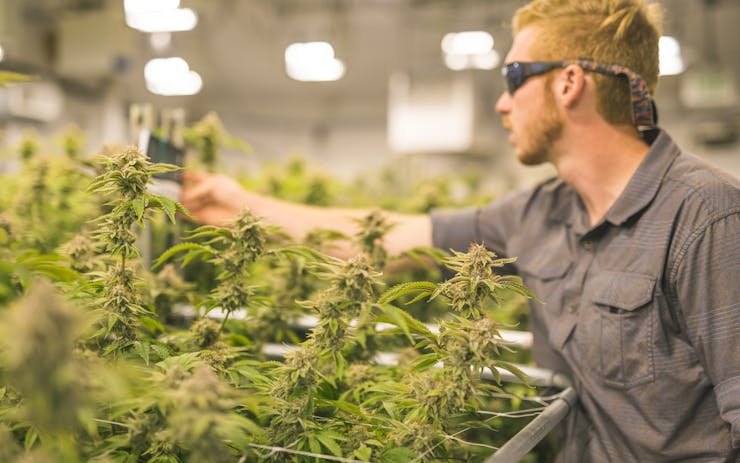The rapid consolidation of Canada’s cannabis sector continued today when two of the nation’s largest licensed producers announced the biggest transaction in the country’s cannabis sector to date. Aurora Cannabis intends to buy all common shares of MedReleaf, merging the two companies into one. The companies said the deal, which is subject to shareholder approval, is worth C$3.2 billion.
Aurora is buying MedReleaf, creating a combined company worth an estimated C$7 billion
The move left many industry analysts divided over the ramifications. Some are seeing hard times ahead for smaller cannabis producers, while others predict the market will be large enough to welcome companies of all sizes.
The merged Aurora/MedReleaf will be worth an estimated C$7 billion, surpassing the size of Canopy Growth, which is currently the largest Canadian licensed producer in terms of market value.
If the deal is approved, B.C.-based Aurora will have the capacity to produce 570,000 kg of cannabis per year through nine facilities in Canada and two in Europe.
At a news conference on Monday, Cam Battley, chief corporate officer at Aurora, said the company’s objective is “to become the world’s largest cannabis company.”
“This deal checks every box,” the company’s chief executive, Terry Booth, added. “We’re leaders in every box now, and we’re not looking back and we’re not going to stop here.”
Pressure on Smaller Producers
As Canada’s federal legalization of recreational cannabis draws near, consolidation is becoming a trend in the country’s cannabis industry—one that’s long been predicted by industry analysts and insiders.
Four months before striking this deal with Ontario-based MedReleaf, Aurora bought Saskatchewan-based CanniMed Therapeutics in a C$1.1 billion stock-and-cash deal.
In February, Ontario-based Aphria acquired B.C.-based Broken Coast Cannabis in a stock-and-cash transaction that was valued at more than C$200 million.
Ontario-based Canopy today announced that it has a non-binding agreement to buy the remaining 33% stake of BC Tweed Joint Venture in return for up to C$374 million worth of its shares.
What’s this all mean? Jason Zandberg, an analyst covering the cannabis space for PI Financial, told Leafly that consolidation could squeeze out many smaller cannabis producers. “As major producers become bigger it puts pressure on the others,” he said. “It’s difficult for smaller producers to compete with that much firepower.”
According to Canaccord Genuity, a financial services firm, Aurora’s 570,000 kg output could represent nearly the total amount required by Canada’s combined recreational and medical markets by 2021.
CIBC analysts recently estimated that the total market will require about 800,000 kilograms by next year.
“Aurora would effectively soak up much of the demand” for Canadian cannabis, said Zandberg, even though the company would ship some of its product abroad.
Allan Rewak, executive director of Cannabis Canada, an industry association, disagrees. “I think there is plenty of room in the market for players of all sizes,” he told Leafly.
More Mergers Expected
Zandberg predicts that the trend of consolidation will continue. “We will see similar transactions in the future,” he said, referring to the new deal between Aurora and MedReleaf. “You will see lot of activity among medium-sized players.”
Regardless of how it might affect smaller players, consolidation in the cannabis sector is good for consumers, Zandberg added. “In general, when you get some sophisticated players in a sector, it is good for consumers because you have coordinated production and sales schedules.”
He dismisses the notion that less competition in the cannabis industry could lead to price hikes on the retail side. To get their product to market, he noted, producers will have to sell to central buyers in the provinces rather than to consumers directly, so prices will have to be reasonable.
In Rewak’s view, consolidation is a great sign for the industry. “It shows the continued normalization of [the] sector,” he said, “and incredible interest in it by financial markets, consumers and others.”





